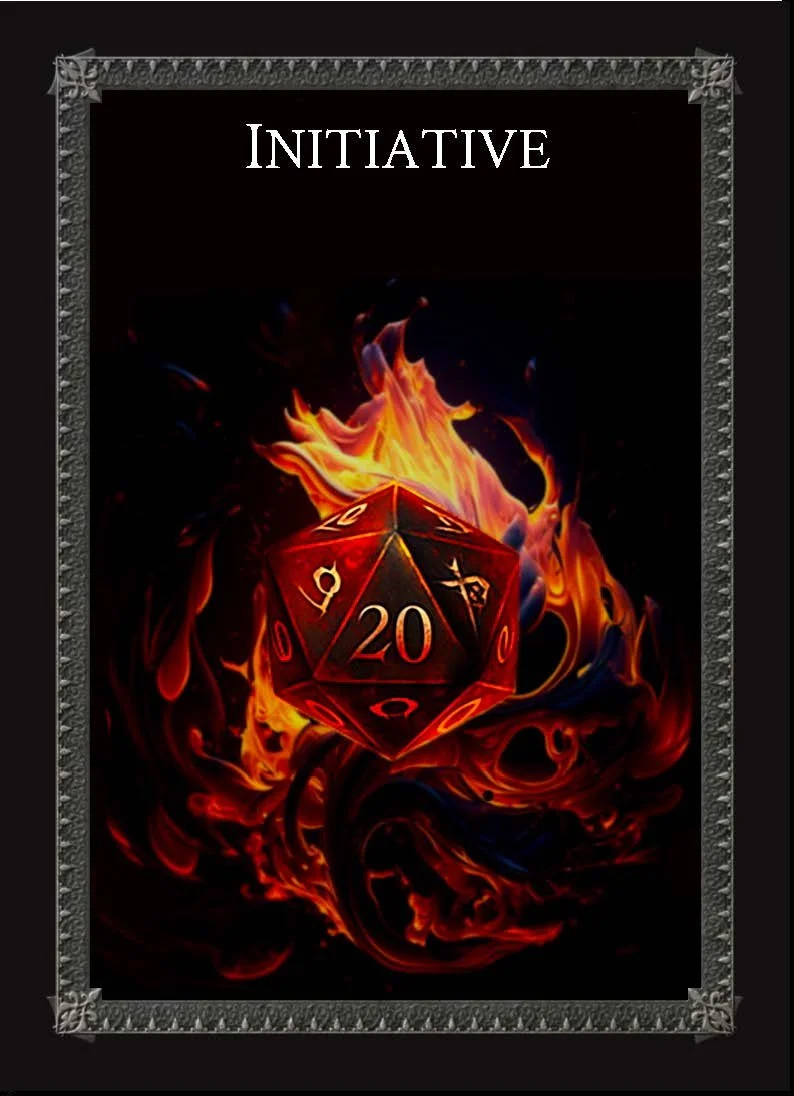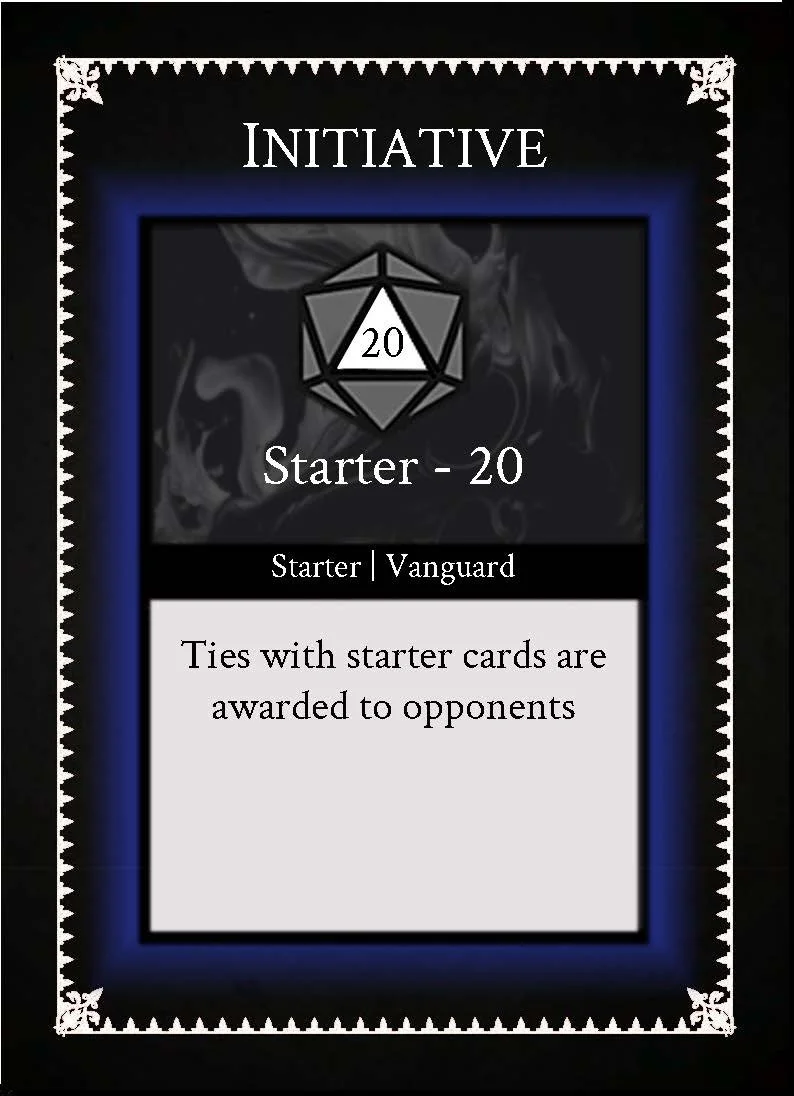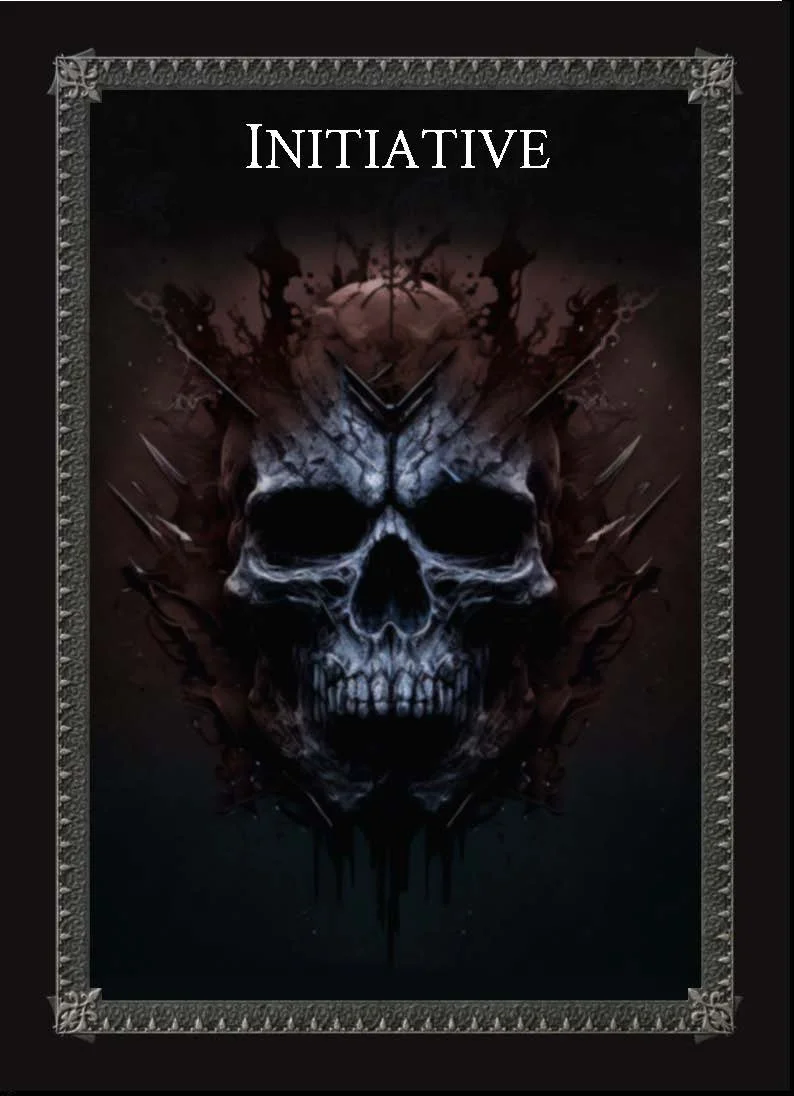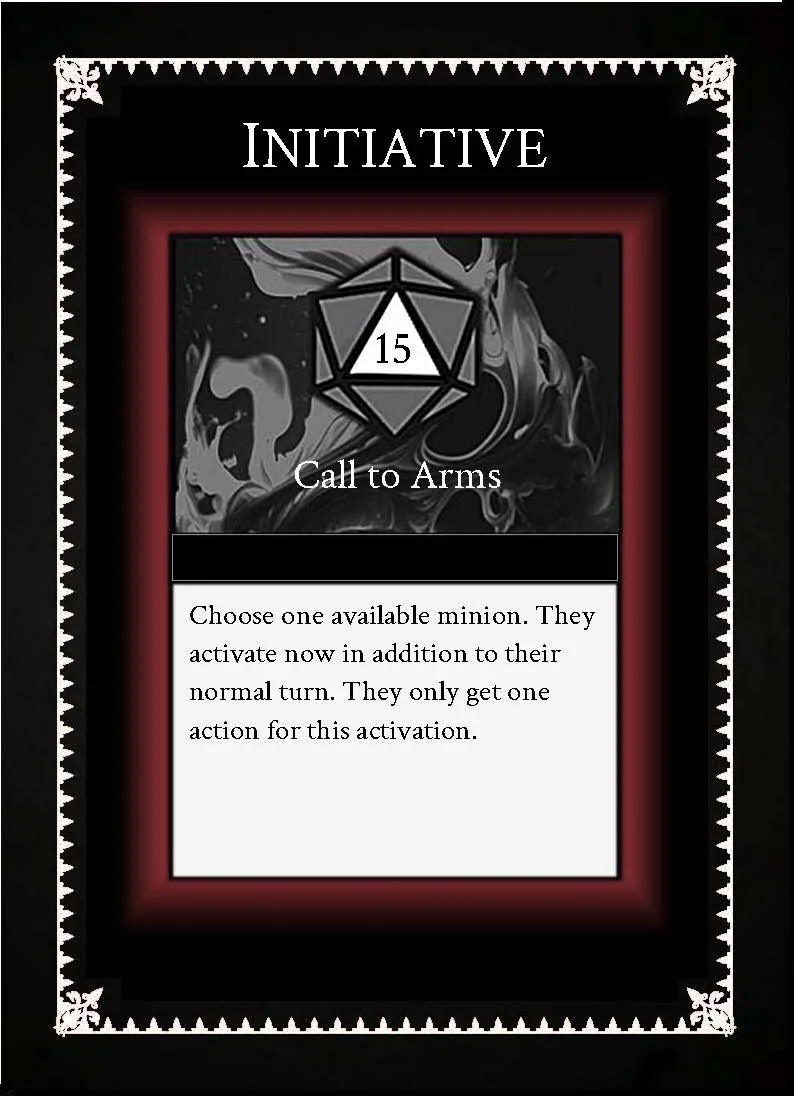Initiative
When the GM calls for it, you’ll kick combat off by drawing a single card from your personal initiative deck to determine your place in the initiative order, which is the sequence in which the encounter’s participants will take their turns. Drawing initiative marks the start of an encounter, with each round resulting in a new draw.
The Player Deck
You begin the game with a standard player initiative deck - a deck of twenty cards with numbers ranging from 1-20, representing the classic 20-sided die you roll in other games for initiative. However, that is where the similarities end. Your deck both immediately and gradually improves as you gain new abilities or increase your agility score. Each card in your starting deck possesses
For each point of Agility you posses, you remove the equivalent base card from your deck. For example, if you begin play with an AGI score of 3, then starter cards 1, 2, and 3 are all permanently removed from your initiative deck. You will never draw a starter card below a 4 now, and only conditions and improved cards can result in lower counts.
Feats, items, and even spells you learn can have the added effect (or express purpose) of adding a specific card to your deck. For example, the Improved Initiative Card prompts you to draw an additional card during initiative, adding 4 to the number on the card drawn.
Many initiative cards also include special qualifiers. For example, the card Opportune Winds provides a flat number, but also grants an additional +2 bonus to any ranged attacks executed within the round. These unique cards add tactical options without impacting speed of play.
The DM Initiative
The DM draws initiative cards for villains and other major characters in an encounter. The villain deck is similar to that of the players, but may have special rules for the Villains activation, unique abilities, or allow extra turns or commands for minions. Minions themselves, or random encounters where there are no special rules for the enemies, instead roll 1d10 + AGI. Minions using the initiative die over cards typically have no special tactical bonuses for initiative other than what is included in their monster block.
Unlike a typical check, where the result is compared to a DC, the results of initiative cards are ranked. This ranking sets the order in which the encounter’s participants act — called the initiative order. The character with the highest result goes first. The second highest follows, and so on until whoever had the lowest result takes their turn last.
Gaining New Cards
When an ability calls for you to gain an initiative card one of two things will happen:
If the card is an Upgrade (usually derived from a feat) then you may replace that card with any starter card in your deck with the same number of below.
If you gain an upgrade and no longer have starter cards remaining, you must add the card to your deck instead - unless the card informs you otherwise.
If the card is a Condition (usually a temporary effect) then you simply add that card to your deck. Most conditions are removed from your deck when drawn or met a specific criteria is met (such as healing removing a Hamstring effect).
Card Traits
Most initiative cards have traits associated with them. The most common trait is the starter trait, which is affixed to every initiative card. If your result is tied with a foe’s result and you reveal a starter card, the adversary goes first. All cards added to your deck (regardless of how they were gained) result in you going first over an adversary in the event of a tie (unless a villain card states otherwise). If your result is tied with another PC’s, you can decide between yourselves who goes first when you reach that place in the initiative order. As a reminder - after each round, you draw a new card to determine the new initiative order.
| undefined | Trait Description |
|---|---|
| Boost | This card's initiative value is added to the next card (which is immediately drawn) |
| Fumble | A card with this trait always goes last in a round, only using the number to break ties |
| Starter | Ties with starter cards are awarded to opponents |
| Vanguard | A card with this trait always goes first in a round, only using the number to break ties |
| Movement | Actions with the move trait can trigger reactions or free actions throughout the course of the distance traveled. |
Holding
If you decide not to act in a round, or if the number of remaining actions you have in a given round is at least three (due to an ability granting you more actions), then you may opt to keep your card as a holdover instead of drawing a new one. Some tactics may warrant keeping a particularly useful or specific card appropriate to a scenario.
-
My goal with initiative was twofold:
First - I needed it to be as fast paced and just as simple as rolling a single d20.
Second - it needed to be dynamic and engaging.
Using cards in lieu of dice isn’t unique in and of itself, but being able to provide players with agency in how their initiative opportunities are formed very much is. Moreover, the act of drawing each round provides a built-in reset and refocus that standard iniative systems don’t inherently possess.
Cards have been a unique resource in my games and will be used for tracking all kinds of things, so card-izing initiative is a logical leap; one that injects more complexity but can easily be absorbed by new and old players alike.
Brandon once told me my D&D game was slowly becoming a board game, and deck-building games are one of my favorite genres… so maybe this is the true marriage of the two!
Card Examples
Player Initiative Front
Starter Card
Example Upgrade Card
Example Condition Card
Villain Initiative Front
Example Villain Card






